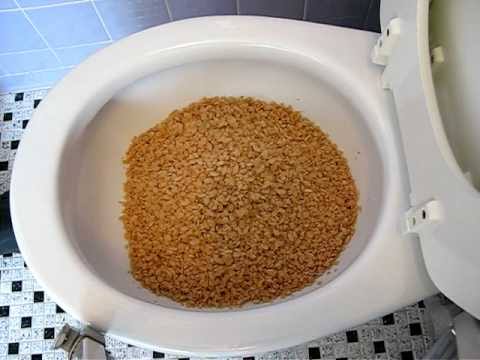Can You to Dispose of Food in the Toilet?
Can You to Dispose of Food in the Toilet?
Blog Article
How do you feel in regards to What Can Happen If You Flush Food Down the Toilet??

Introduction
Lots of people are usually confronted with the dilemma of what to do with food waste, specifically when it comes to leftovers or scraps. One typical concern that occurs is whether it's okay to flush food down the commode. In this write-up, we'll look into the reasons people might take into consideration flushing food, the repercussions of doing so, and different approaches for correct disposal.
Reasons people might take into consideration flushing food
Lack of recognition
Some individuals may not know the potential damage caused by purging food down the bathroom. They may erroneously believe that it's a safe practice.
Comfort
Purging food down the commode might seem like a quick and very easy remedy to throwing away undesirable scraps, particularly when there's no neighboring trash bin offered.
Negligence
Sometimes, individuals may merely pick to flush food out of sheer negligence, without considering the repercussions of their activities.
Consequences of flushing food down the bathroom
Environmental influence
Food waste that winds up in rivers can contribute to contamination and injury water environments. Additionally, the water used to purge food can stress water sources.
Pipes issues
Flushing food can cause blocked pipelines and drains pipes, causing costly plumbing fixings and troubles.
Types of food that ought to not be flushed
Fibrous foods
Foods with fibrous textures such as celery or corn husks can get tangled in pipes and trigger clogs.
Starchy foods
Starchy foods like pasta and rice can take in water and swell, leading to blockages in pipes.
Oils and fats
Greasy foods like bacon or cooking oils should never be flushed down the toilet as they can solidify and trigger blockages.
Appropriate disposal methods for food waste
Making use of a garbage disposal
For homes outfitted with garbage disposals, food scraps can be ground up and purged with the pipes system. Nonetheless, not all foods are suitable for disposal in this manner.
Recycling
Certain food product packaging materials can be recycled, reducing waste and lessening ecological impact.
Composting
Composting is a green way to dispose of food waste. Organic materials can be composted and utilized to improve soil for gardening.
The relevance of appropriate waste administration
Decreasing ecological injury
Appropriate waste monitoring techniques, such as composting and recycling, assistance lessen air pollution and maintain natural resources for future generations.
Securing plumbing systems
By avoiding the technique of flushing food down the bathroom, homeowners can protect against pricey pipes repair work and keep the stability of their pipes systems.
Conclusion
To conclude, while it might be tempting to flush food down the commode for benefit, it's important to recognize the potential effects of this activity. By adopting correct waste administration techniques and getting rid of food waste sensibly, people can contribute to much healthier plumbing systems and a cleaner atmosphere for all.
FLUSH FOOD DOWN THE TOILET?
FLUSHING FOOD CAN CAUSE BLOCKED DRAINS IN YOUR HOME
All of the plumbing fixtures in your home are connected to the same sewer pipe outside of your home. This outdoor sewer pipe is responsible for transporting all the wastewater from your home to the Council sewer mains. Even small pieces of food that go down the kitchen sink can cause problems for your sewer. It should therefore be obvious that flushing larger bits of food, such as meat, risks a clog in either the toilet itself or the sewer pipes. Flushing greasy food is even more problematic because oil coagulates when it cools, coating the interior lining of your pipes.
THE TOILET IS NOT A BIN
Food isn’t the only thing that people shouldn’t be flushing down the toilet. People use the toilet to dispose of all kinds of things such as tampons, makeup wipes, dental floss, kitty litter and even underwear. Water goes to great lengths to educate residents about the high costs and stress placed on wastewater treatment systems simply from people flushing the wrong stuff down the toilet. It costs taxpayers millions of dollars each year, and homeowners thousands in blocked drain repairs.
FLUSHING FOOD IS A WASTE OF WATER
Flushing food is a waste of our most precious resource - water. In June this year Level 1 water restrictions were introduced to protect water supply from drought conditions. Much of New South Wales continues to be affected by prolonged drought with recent figures revealing up to 97 per cent of the state remains in drought. Depending on whether you have a single or dual flush toilet, every single flush uses between five and 11 litres of water. In the current climate this is a huge amount of water to be wasting on flushing food that should be placed in the bin (or better yet, the compost).
https://www.jabplumbingsolutions.com.au/blog/can-you-flush-food-down-the-toilet

Do you appreciate more info about ? Post a comment down the page. We will be pleased to see your reactions about this blog post. In hopes that you visit us again soon. Sharing is caring. Helping others is fun. I take joy in reading our article about Think Twice Before Flushing Food Down Your Toilet.
Services Report this page